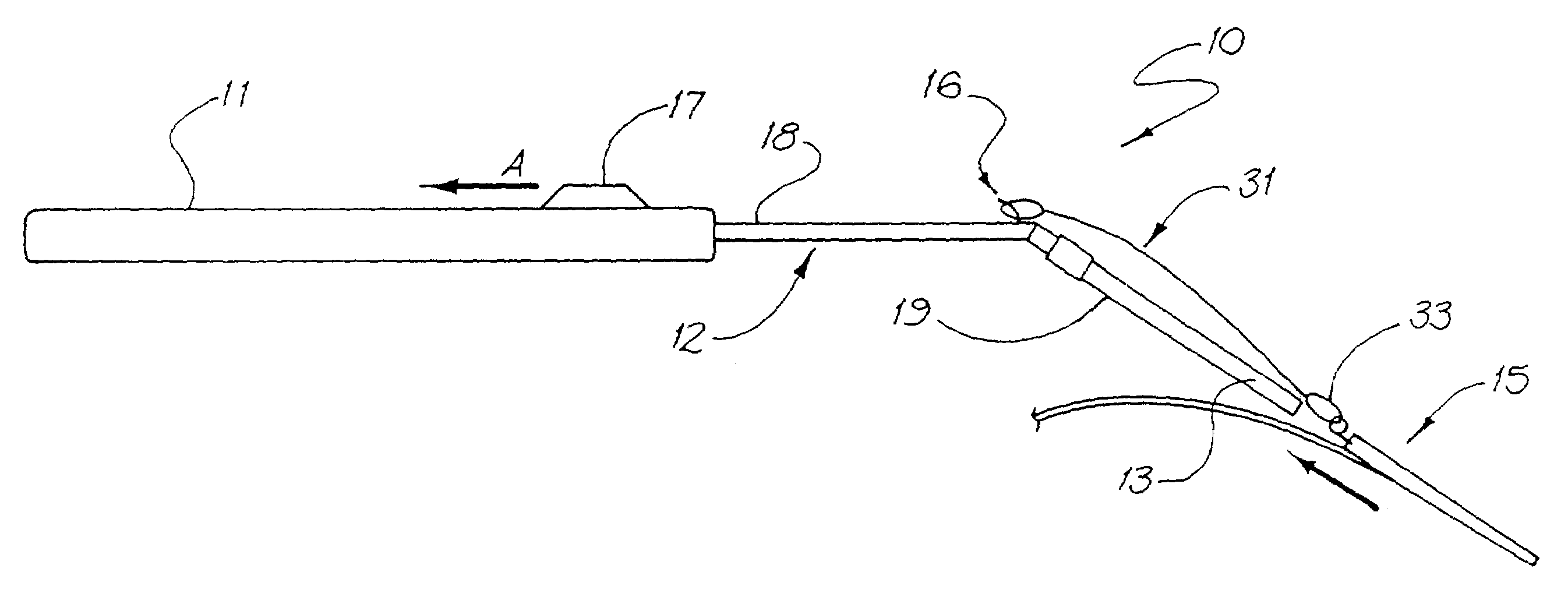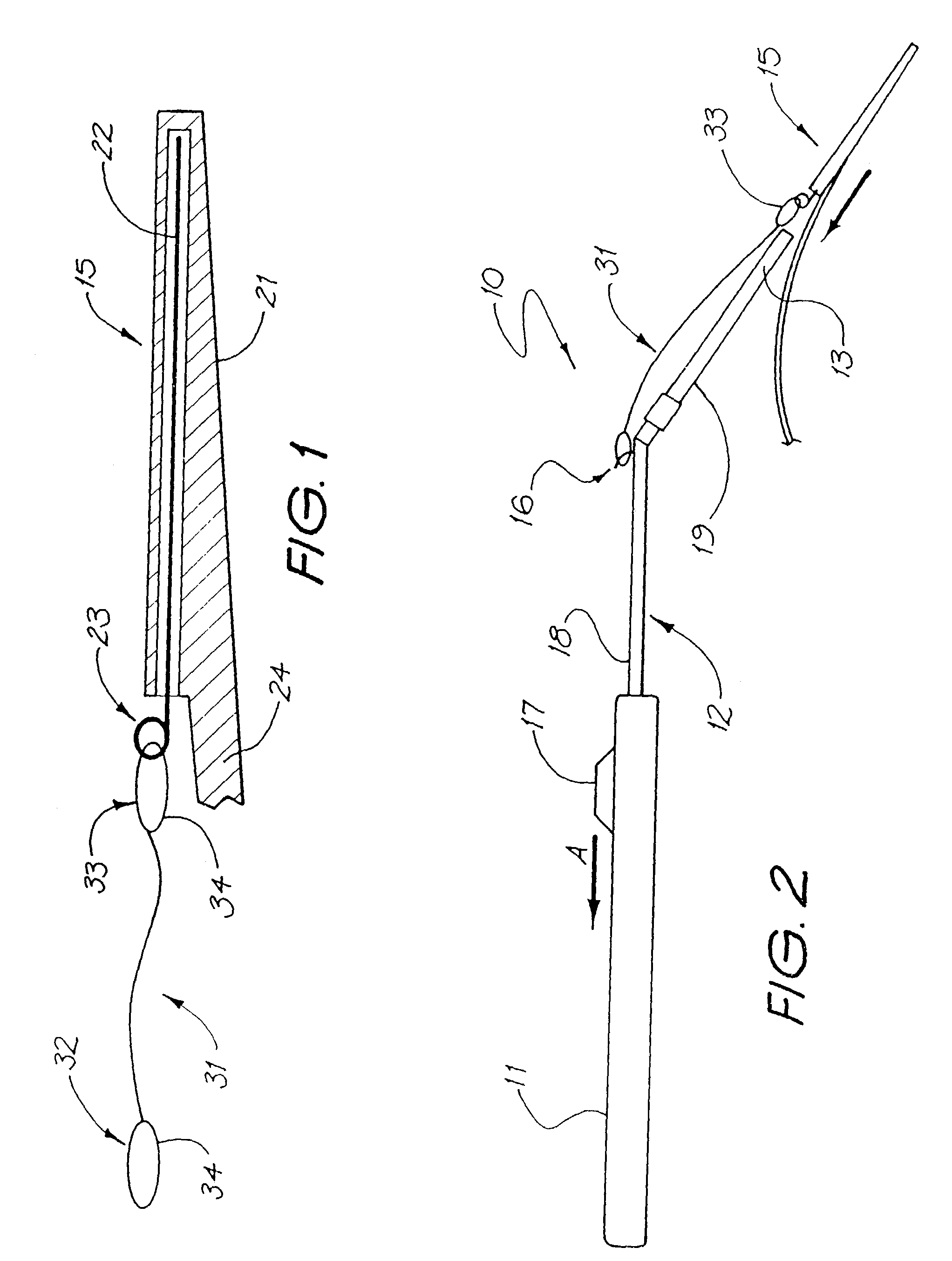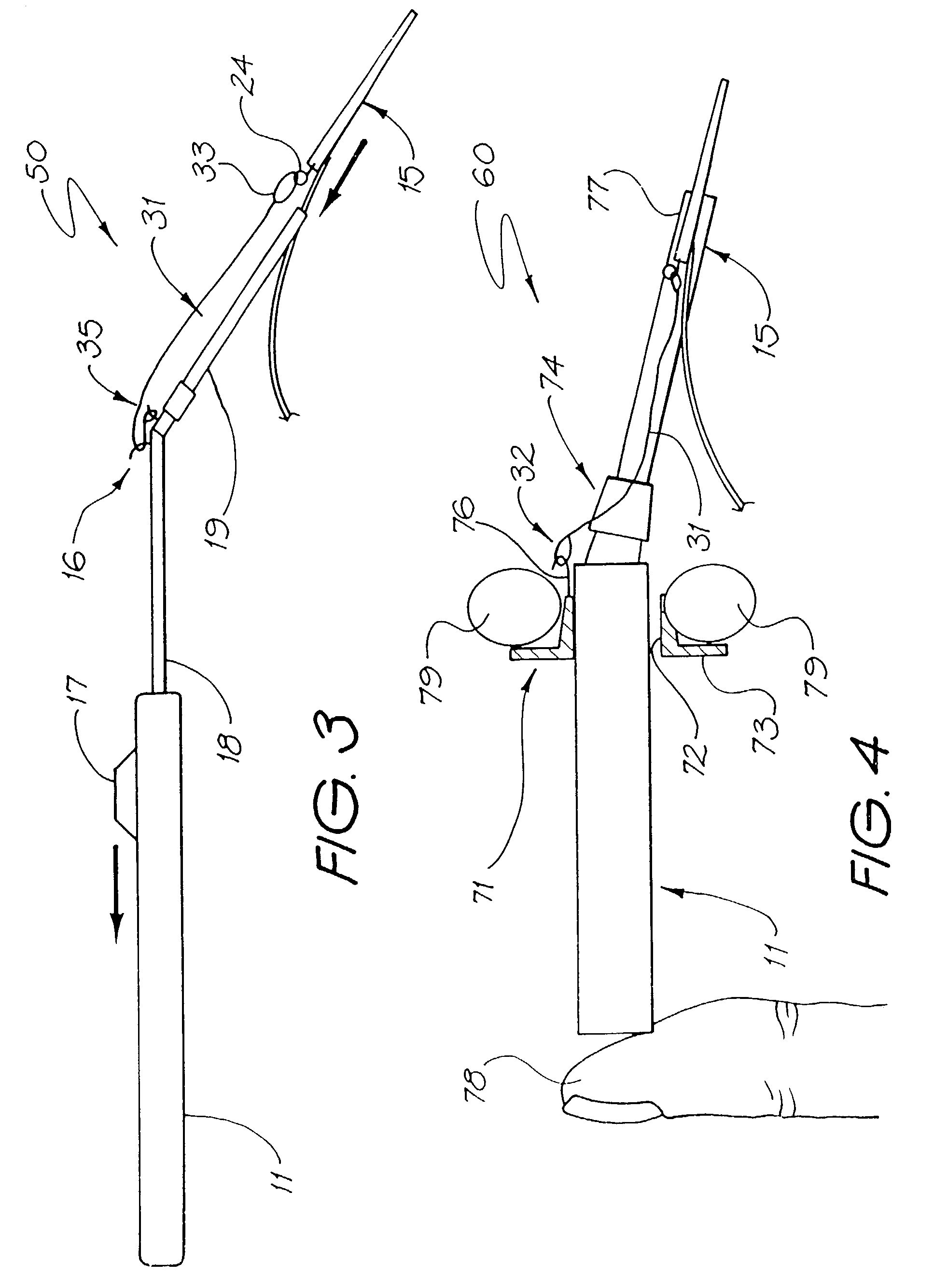Insertion tool system for an electrode array
a technology of electrode array and tool system, which is applied in the direction of external electrodes, ear treatment, sensors, etc., can solve the problems of cross-electrode interference, difficult coordination of techniques, and the inability of people to derive suitable benefits from a conventional hearing aid system
- Summary
- Abstract
- Description
- Claims
- Application Information
AI Technical Summary
Benefits of technology
Problems solved by technology
Method used
Image
Examples
Embodiment Construction
[0066]One embodiment of an insertion device according to the present invention is depicted generally as 10 in FIG. 2.
[0067]The device 10 comprises a handle 11 and an elongate positioning member 12. The positioning member 12 has a proximal portion 18 and a distal portion 19 that extends to a distal end 13. The distal portion 19 receives and supports an electrode array 15 to allow positioning of the array 15 within a cochlea of a subject.
[0068]The device 10 further includes an anchor 16 which is positioned at a location alone the length of the positioning member 12 and extends through a slot (not visible in FIG. 2) in that member. The anchor 16 is connected to a finger actuable control 17 that extends outwardly through a slot in the handle 11 from a slide member (not visible) that extends through the handle 11 and the proximal portion 18 of the positioning member 12 to the anchor 16.
[0069]Electrode array 15 includes an elongate carrier 21 with a plurality of electrodes (not shown for ...
PUM
 Login to View More
Login to View More Abstract
Description
Claims
Application Information
 Login to View More
Login to View More - R&D
- Intellectual Property
- Life Sciences
- Materials
- Tech Scout
- Unparalleled Data Quality
- Higher Quality Content
- 60% Fewer Hallucinations
Browse by: Latest US Patents, China's latest patents, Technical Efficacy Thesaurus, Application Domain, Technology Topic, Popular Technical Reports.
© 2025 PatSnap. All rights reserved.Legal|Privacy policy|Modern Slavery Act Transparency Statement|Sitemap|About US| Contact US: help@patsnap.com



